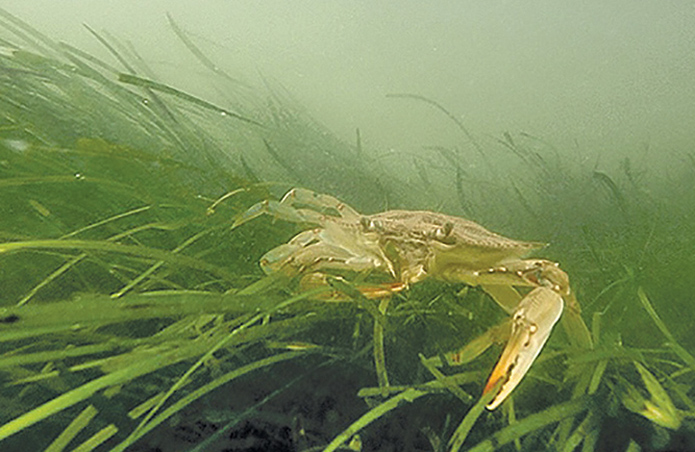By Timothy B. Wheeler
Bay Journal
The Chesapeake Bay’s overall “dead zone” turned out to be average in size this year, but abnormal weather through spring and summer made for some extreme conditions along the way, according to reports from Maryland and Virginia.
Researchers with the Virginia Institute of Marine Science determined via a computer model that the total volume of “hypoxic” water in the Bay, with oxygen levels low enough to stress fish, crabs and shellfish, was on par this year with that of 2017, taking up about 7% of the mainstem Chesapeake.
The Maryland Department of Natural Resources, using water-quality data gathered in sampling cruises from June through September, reported similar findings for the Maryland portion of the Bay. The DNR said that 17% of its waters had low dissolved oxygen levels — which matched the long-term average from 1985 through 2017.
But the DNR also found that abnormally wet weather through the first nine months of this year caused the low-oxygen zone in Maryland to gyrate in size from above-average in spring to near-record size by late June. It then plummeted to a record low in late July as a result of strong winds, followed by a rebound to higher than average in August and near-record again by late September.
“It’s fascinating how the hypoxic volume was so low in late July and so high in early September, but overall the hypoxic volume was basically the same as last year,” said Marjy Friedrichs, a VIMS research associate professor who co-developed the dead zone model. Originally developed using federal funding, the 3-D, real-time model draws on 30 years of water-quality data collected by the Chesapeake Bay Program. Daily wind and river-flow information is also part of the calculation.
Predictions were higher
Scientists had predicted the dead or hypoxic zone would be higher than average this year, based on high spring flows from the Susquehanna. The river, which normally furnishes half of the Chesapeake’s freshwater, was expected to pump unusually large amounts of nutrients into the Bay. Those nutrients — nitrogen and phosphorus — feed algae blooms, which die and decay, consuming oxygen in the deeper waters in the process.
The dead zone grows in warm weather, which encourages algae growth, and the general lack of wind during summer usually prevents much mixing of relatively oxygen-rich surface waters with the oxygen-poor depths.
Maryland experienced double the normal amount of rainfall in May, which the DNR said likely brought additional nutrients and sediment into the Bay and accounted for the larger than average dead zone in June.
July also brought massive rainstorms in the Maryland and Pennsylvania portions of the Chesapeake watershed, resulting in near-record freshwater flows. But the high flows were accompanied by sustained winds of 20 knots that mixed oxygen into the Bay’s depths, just before the late July sampling cruise found a record-low size dead zone.
Winds abated and river flows eased up in August, and the volume of low-oxygen water grew again and exceeded the long-term average by late in the month. By mid-September, the zone had reached near-record size, the DNR reported.
The influence of weather
The DNR said the fluctuation shows how weather can influence short-term conditions. Long term, it added, the dead zone has been shrinking, which a 2011 study attributed at least partly to pollution reduction efforts. High river flows pumping extra nutrients into the Bay, as they did this year, can buck that trend, the department noted.
While the VIMS model indicates that the Baywide total amount of low-oxygen water for 2018 was similar to last year, Friedrichs said the seasonal patterns were clearly different this year.
Low-oxygen waters averaged about 7% of the Bay’s entire volume during summer, with hypoxia more pronounced in Maryland, affecting nearly a fifth of its waters. This year, though, the dead zone occupied 14.4% of the Bay’s mainstem waters on July 5, Friedrichs said, but by July 26 — just three weeks later — had fallen to 0.14% of the mainstem water.
Friedrichs noted that low-oxygen conditions generally started earlier and lasted longer than in recent years. Other research suggests climate change could make such early onsets of the dead zone more common, she said.







Recent Comments